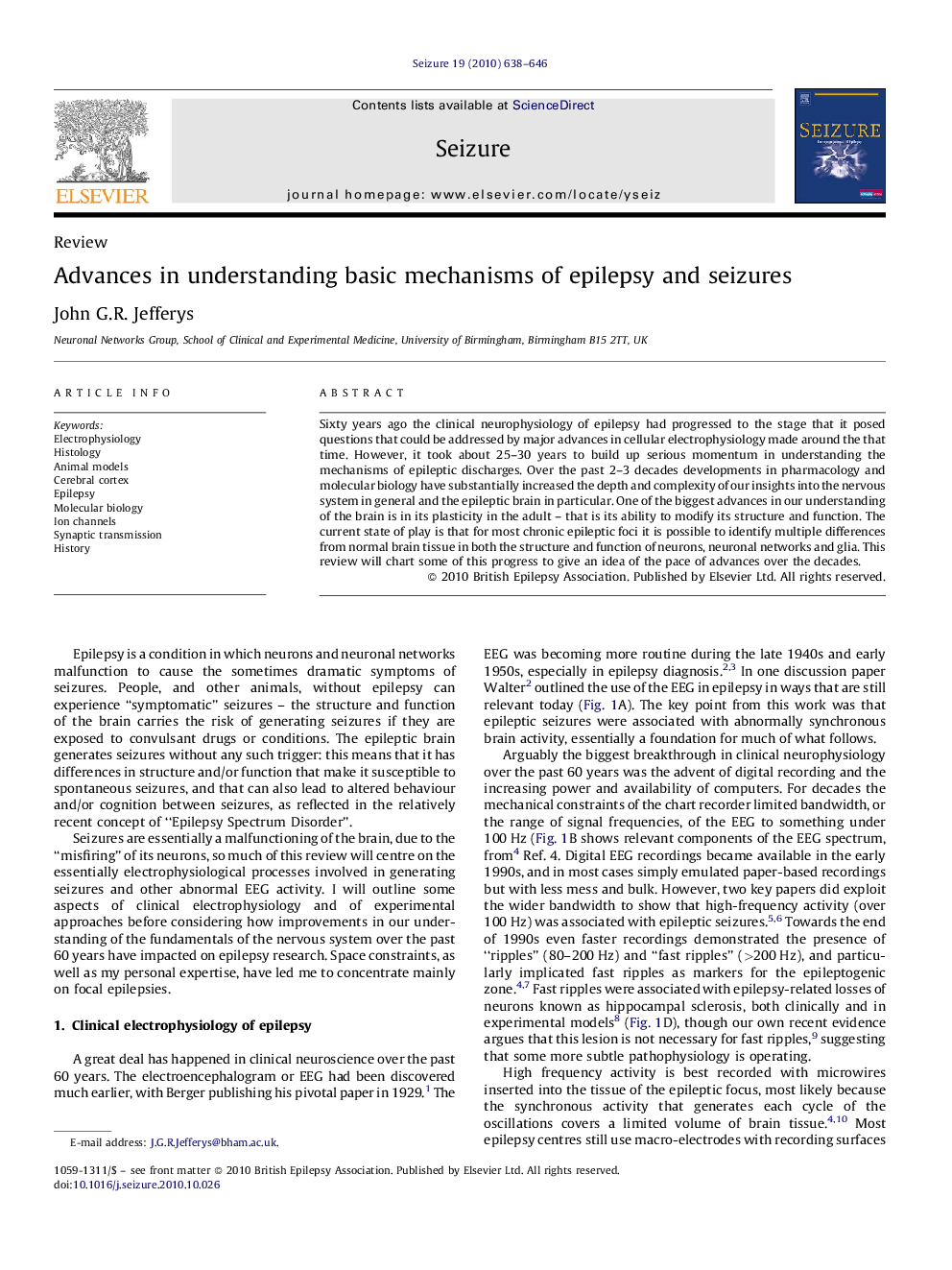| Article ID | Journal | Published Year | Pages | File Type |
|---|---|---|---|---|
| 340639 | Seizure | 2010 | 9 Pages |
Sixty years ago the clinical neurophysiology of epilepsy had progressed to the stage that it posed questions that could be addressed by major advances in cellular electrophysiology made around the that time. However, it took about 25–30 years to build up serious momentum in understanding the mechanisms of epileptic discharges. Over the past 2–3 decades developments in pharmacology and molecular biology have substantially increased the depth and complexity of our insights into the nervous system in general and the epileptic brain in particular. One of the biggest advances in our understanding of the brain is in its plasticity in the adult – that is its ability to modify its structure and function. The current state of play is that for most chronic epileptic foci it is possible to identify multiple differences from normal brain tissue in both the structure and function of neurons, neuronal networks and glia. This review will chart some of this progress to give an idea of the pace of advances over the decades.
